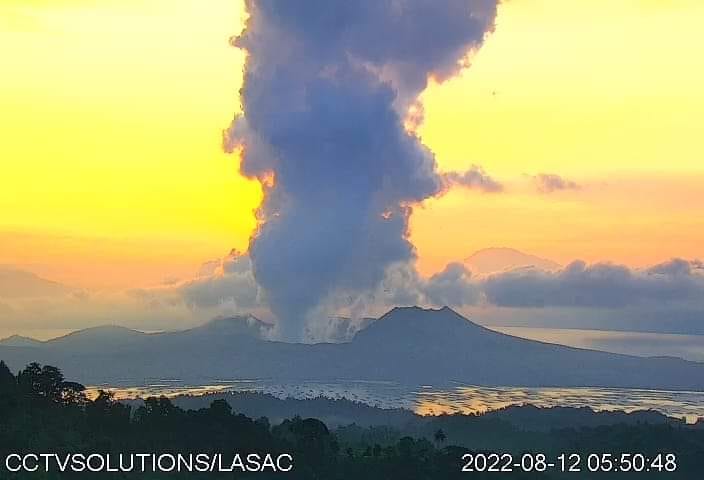Startling developments have unfolded near the Mayon and Taal volcanoes, sending shockwaves through the communities residing in close proximity to these geological powerhouses. Since Sunday, both volcanoes have shown signs of increasing restlessness, prompting authorities to issue a stern warning and advice to farmers and residents within their danger zones.
The Philippine Institute of Volcanology and Seismology (Phivolcs) released a bulletin on Monday morning, raising Mayon Volcano’s alert level to 2, indicating the potential for phreatic, or steam-driven, eruptions, as well as hazardous magmatic eruptions. Adding to the concern, Mayon has witnessed a surge in rockfall events, skyrocketing from an average of five daily incidents in April to a staggering 49 since Sunday morning. The seismic monitoring group, Mayon Volcano Network (MVN), has recorded a total of 318 rockfall events so far.
According to Paul Karson Alanis, resident volcanologist at the Mayon Volcano Observatory Station, these rockfalls are a result of the collapse of the lava dome. However, Alanis emphasized that there is currently no evidence of rising magma. He explained that if there were magma exerting pressure from deep within the volcano, more earthquakes would likely occur, leading to rock fractures. Surprisingly, despite the limited number of earthquakes recorded, the lava dome continues to grow, indicating a complex volcanic behavior.
Since April, the MVN has detected 26 volcanic earthquakes, further highlighting the heightened activity of Mayon Volcano. Phivolcs has strongly advised residents near Mayon to exercise vigilance and avoid entering the designated permanent danger zone, spanning a radius of 6 kilometers. These precautions aim to mitigate the risks associated with sudden explosions, rockfalls, and landslides that may occur.
Phivolcs also issued guidelines for potential ashfall events, urging individuals downwind of Mayon’s crater to protect themselves by covering their nose and mouth with a damp, clean cloth or dust mask.
In a separate update, Phivolcs reported the emergence of “voluminous steam-rich plumes,” reaching a staggering 3,000 meters above Taal Volcano Island. Despite this significant development, Taal’s alert level remains at 1. Notably, sulfur dioxide emissions have spiked, with a daily average of approximately 5,831 tons since last week.
Residents in towns surrounding Taal Lake have been advised to closely monitor updates on the volcano’s activity, as its island remains largely uninhabited after being designated a permanent danger zone following the eruption in January 2020. About 800 families, previously reliant on farming, fishing, and tourism on the island, have since been resettled to a relocation center in Talisay town.
As both Mayon and Taal Volcanoes display escalating unrest, the situation demands continued attention and preparedness from the authorities, while the affected communities remain on high alert for any further developments.





Reader Interactions